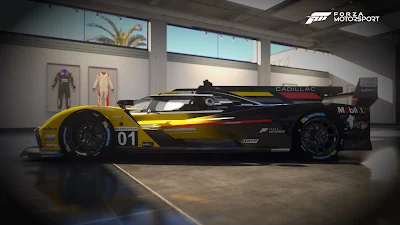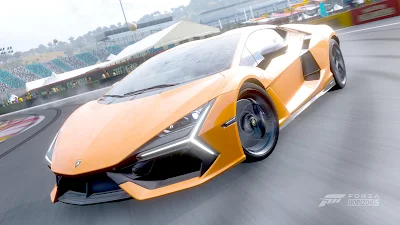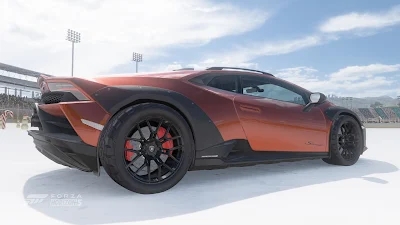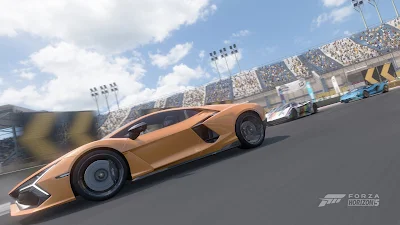Since its inception in 2005, the Forza Motorsport franchise has delivered us some of the most amazing vehicles spanning half a century through the world's most demanding racetracks spanning from Asia, Europe, and the Americas.
Now it's the turn of the two cover cars that starred in what's known to be the last-ever Forza Motorsport game ever made.
The first-ever Chevrolet Corvette C8 E-Ray rewrote the American sports car's seven-decade history ever since the eighth-generation model, the first mid-engined Corvette, broke cover in 2020.
The E-Ray features a 6.2L LT2 V8 engine that is mated to an electric drive unit powering both front and rear wheels, making it a four-wheel-drive supercar, a Corvette first. It produces a total power output of 655HP, and while mated with an 8-speed transmission, it has a 0-60mph time of 2.5 seconds and a quarter-mile time of 10.5 seconds.
The ZER Performance Package comes with high-performance Michelin Pilot Sport 4 S ZP summer-only tires as well as chassis tuning and other performance enhancements.
The V-Series.R racing prototype is Cadillac's commitment to the LMDh class and it's made to compete not just in the IMSA WeatherTech SportsCar Championship for the new-generation GTP class but also at the WEC's Hypercar class. It was built in cooperation with Dallara.
In compliance with the LMDh standards, the V-Series.R is powered by a 5.5L DOHC V8 Hybrid engine, the only naturally aspirated engine in the GTP class. It has a series-specified 670hp of power output and it is mated to a 7-speed sequential gearbox.
The #01 Cadillac Racing V-Series.R used in the IMSA 2023 season was driven by IndyCar veteran Sebastien Bourdais and Renger Van Der Zande.
In the 2023 IMSA WeatherTech SportsCar Championship, the #01 Cadillac Racing V-Series.R won the Motul Course de Monterey endurance race at Laguna Seca. At the 2023 24 Hours of Le Mans, the #01 Cadillac Racing V-Series.R finished 4th place, behind the 3rd-placer #02 V-Series.R race car.
For one last drive for the entire Forza franchise, let's bring the final Forza Motorsport game's cover cars to Yas Marina Circuit. It's an appropriate circuit for an appropriate moment because, as they say, it all ends here. For those of us who consider the end of something, I would say that this is the perfect location to say goodbye to the Forza series.
Without further ado, let's roll the tapes.
Like all good F1 drivers, their final lap in Yas Marina really marks the end of an era. I have to be honest with you: As demonstrated with the cover cars of the last-ever Forza Motorsport game, it pains me to say that it really is the end of what's known to be one of the best gaming franchises in the world of Xbox.




















































